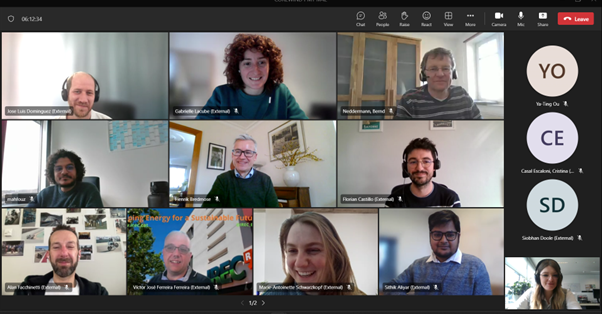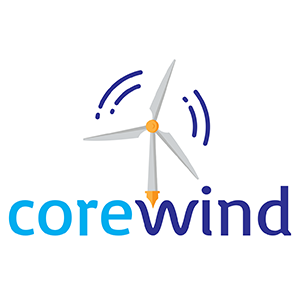
With the end of the project slowly approaching, the COREWIND partners met online today to discuss their final activities before publishing the results. During a fruitful 5-hour meeting, the partners recounted the key steps achieved over the past six months in reducing the costs of floating offshore wind. And they achieved a lot!
- Extensive simulations have been carried out on the optimised mooring systems and the optimised design of floaters. Key recommendations on the design of mooring connections and the design of concrete floaters will be published soon.
- Relevant strategies and models have been developed to design and optimise the station keeping systems. The final designs for the three geographies are compliant with ultimate and fatigue limit states.
- Design guidance for dynamic cabling systems is currently being prepared and will include design considerations on several aspects such as water depth, loading conditions or locations of hardware.
- The results of a case study at Morro Bay (US) for the Transport and Installation strategies have been published – including recommendations and a selection of the most promising installation scenarios.
- The experimental validation of the fully coupled system is progressing. This includes over 135 tests to be conducted for the scale prototypes of WindCrete (spar) and ActiveFloat (semi-sub).
- The final cost-reduction is being calculated and will soon be finalised. The final report will include all cost-saving opportunities for floating offshore wind.
- A final go-to-market plan is being prepared along with a report identifying the main market and research opportunities in different parts of the world.
As the next step, a final hybrid event will be organised on 26 April in Copenhagen to officially publish the final cost-reduction outcomes, and the results of the Life-Cycle Assessment for the different scenarios.
Don’t miss it if you’re eager to improve cost-competitiveness of floating offshore wind!
